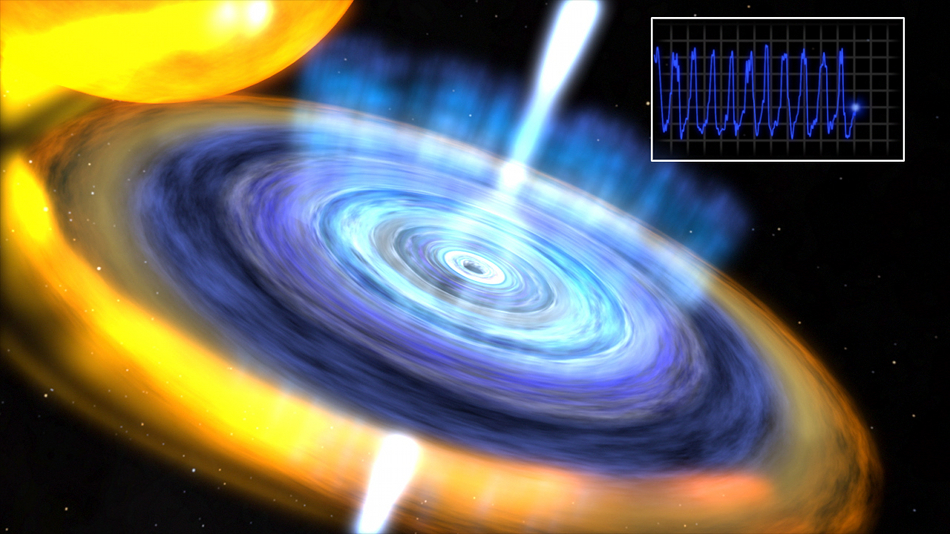
 Credit: NASA's Scientific Visualization Studio; D. Altamirano et al., 2011
Credit: NASA's Scientific Visualization Studio; D. Altamirano et al., 2011
The Littlest Black Hole
How small can you make a hole? If you're talking about black holes, in theory you can make them any size, as long as you can squeeze small amounts of matter to a small enough volume. If you wanted to make a small black hole, you could take the earth and squeeze it down to the size of your thumbnail. But such small black holes are very hard to detect, so astronomers don't have a real good understanding of how small black holes can be. Most black holes that have been found either have masses of about 10 times the mass of the sun, or else are huge supermassive things of millions or billions of suns. There may be some with masses between the 10-solar-mass and million-solar-mass sizes, but that's a bit controversial. Finding very low mass black holes is of great interest to astronomers. Now, using a new technique, astronomers believe they have found a black hole which weighs in at only 3 solar masses. If confirmed, this would be a record. The technique involves measuring the changes in X-ray brightness of the black hole, which resides in a binary star system called IGR J17091-3624. Matter from the normal companion star falls onto the black hole, forming a disk of material spiralling around the black hole before it disappears through the event horizon and leaves our Universe forever. In these accreting black hole systems, shown schematically above, the powerful radiation produced by the disk can push matter away from the black hole, but instabilities eventually set in, and the inner disk material rains down on the black hole like water pouring down a drain. Eventually the disk rebuilds itself and the cycle repeats, producing a characteristic "heartbeat" of X-ray emission, as shown in the inset above. Observations with the Rossi X-ray Timing Explorer found such a heartbeat from IGR J17091-3624. The pulse variations depend on the mass of the black hole, indicating IGR J17091-3624 is the smallest black hole yet found.
Published: December 19, 2011
<
HEA Dictionary ● Archive
● Search HEAPOW
● Other Languages
● HEAPOW on Facebook
● Download all Images
● Education ● HEAD
>

Each week the HEASARC
brings you new, exciting and beautiful images from X-ray and Gamma ray
astronomy. Check back each week and be sure to check out the HEAPOW archive!
Page Author: Dr. Michael F. Corcoran
Last modified Monday, 26-Feb-2024 17:21:47 EST


